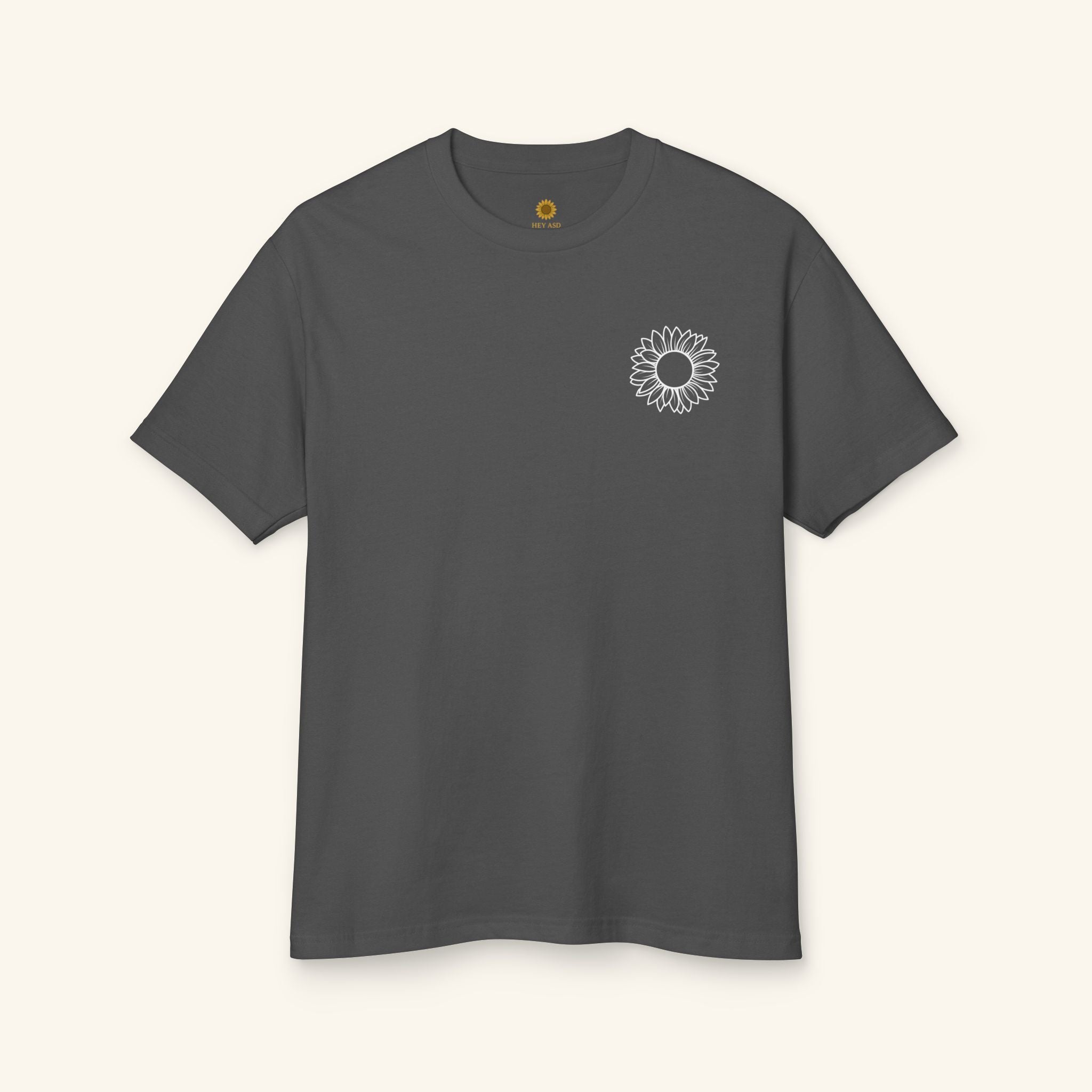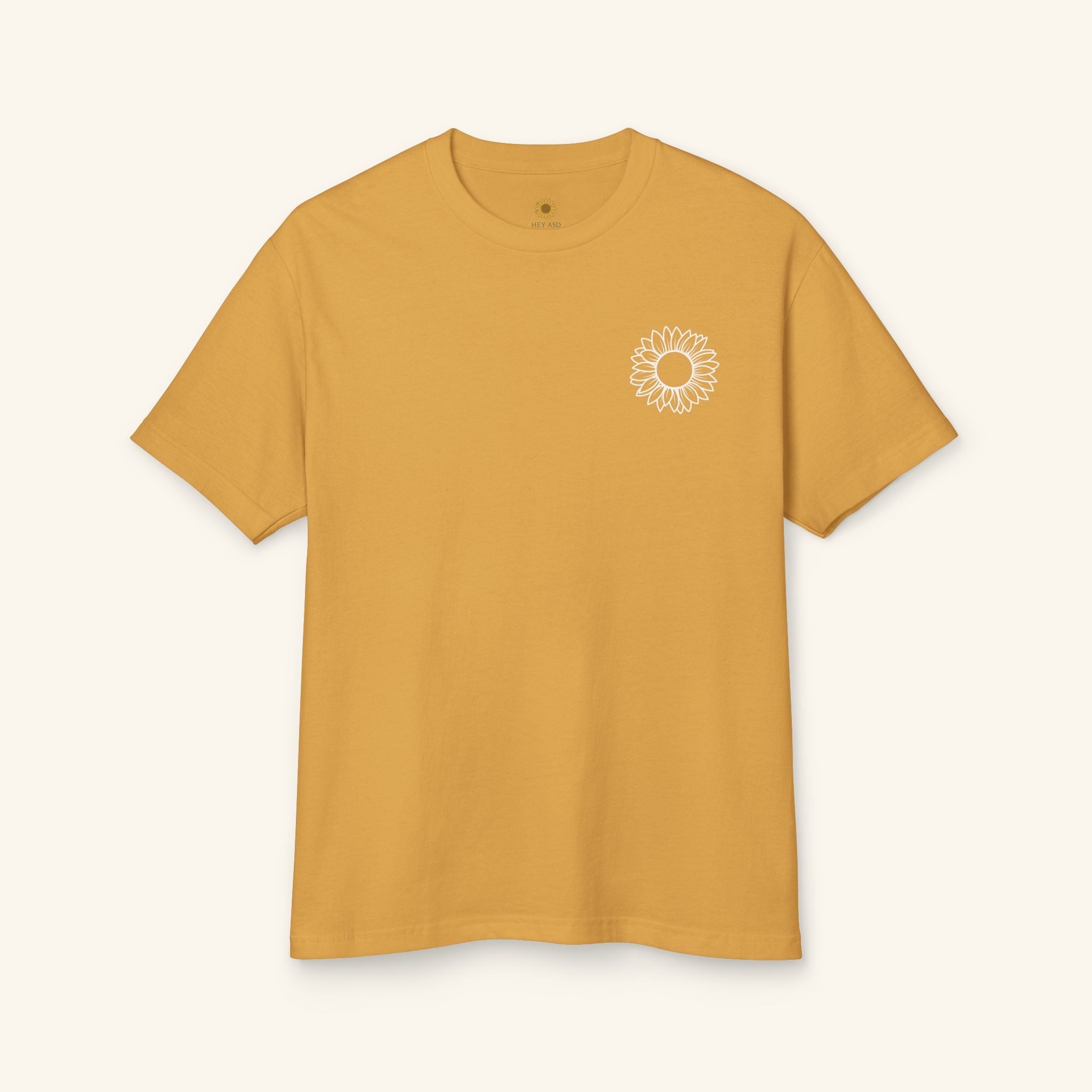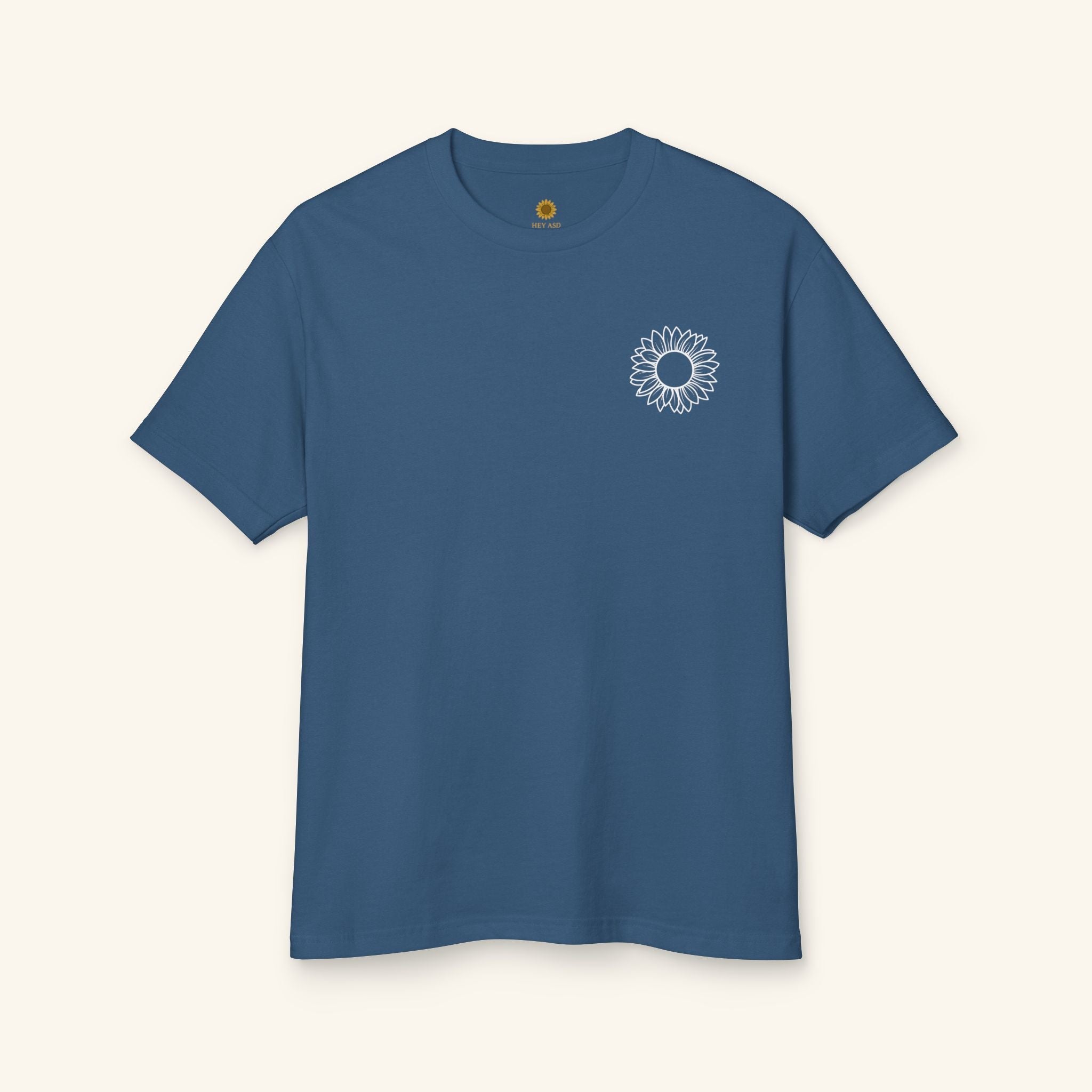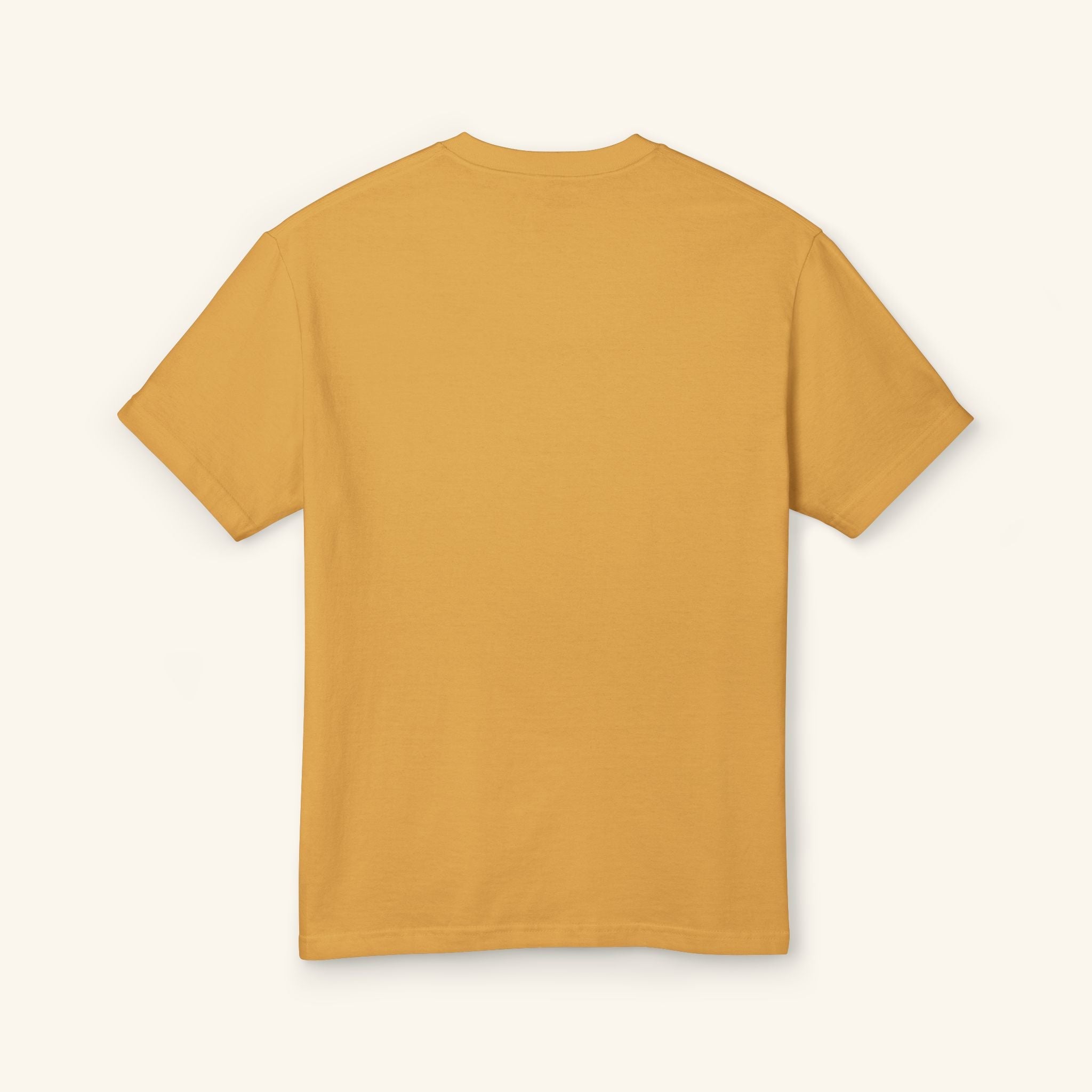Best Side Hustles & Business Ideas for Autistic Adults: Earn on Your Own Terms

Written by the HeyASD Editorial Team
Work should fit your brain, not the other way around. Many autistic adults find regular jobs exhausting—rigid schedules, noisy work environments, being "perceived" by co-workers, and constant social demands. Side hustles and small business ideas can flip that script. You can set your own schedule, control your sensory input, and build an own business that respects your needs on the autism spectrum.
This is a practical, affirming guide for autistic adults who want flexible ways to start earning money now—and possibly grow into a small business later. You’ll find clear steps, tools, scripts, and burnout-aware routines. Keep what helps. Ignore what doesn’t. You’re in charge.
Why Side Hustles Work Well for Autistic Adults
- Control your environment: Choose home jobs or calm spaces. Adjust light, sound, and breaks to suit sensory needs.
- Own schedule: Work when your energy peaks. Build a daily routine that respects recovery time.
- Strength-led work: Detail focus, pattern recognition, visual thinking, and deep interests translate into valuable services.
- Low social load: Pick gigs with minimal meetings or use async communication scripts to keep things predictable.
- Scalable income: Start small to begin earning money; scale into a business model that suits your life.
💡 Key insight: Being your own boss means you can set boundaries and design a work environment that keeps you steady for the long period—without masking your way through every day.
The One-Page Business Plan (5 Minutes)
Skip the 20-page document. Use this to clarify your business plan and reduce decision fatigue.
- Offer: What service or product will you provide? (e.g., “Video editing for coaches”, “Graphic designing for local businesses”)
- People: Who benefits? (e.g., “busy creators”, “neurodivergent people launching podcasts”)
- Outcome: What result do they get? (e.g., “publish-ready videos in 72 hours”)
- Process: 3 steps clients follow (e.g., “Send files → I edit → One revision”)
- Price: Simple tier (Starter / Standard / Pro)
- Contact: One place to book you (email, form, or a single landing page)
💡 Reminder: You now have a plan you can read in under a minute—easy to share with a job coach, mentor, or friend for quick feedback.
7-Day Quickstart: Earn Your First $100
Use this if you want momentum without overwhelm.
- Day 1: Pick one offer. Write a 1-sentence pitch: “I help [who] get [result] with [service].”
- Day 2: Set one place to contact you (email or form). Prepare one example (before/after or a short sample).
- Day 3: Choose a starter price (see each hustle below). Offer a first-client discount (limited to 3 clients).
- Day 4: Message 10 people you already know (or 10 local businesses). Use the scripts below.
- Day 5: Post once in a relevant community (Discord, Facebook group, forum) with a helpful tip + soft CTA.
- Day 6: Deliver 1 paid job with clear scope. Track time and tasks to create a repeatable process.
- Day 7: Ask for one testimonial. Package the result as a case study for the next client.
Autistic Strengths That Make Side Hustles Successful
Many autistic adults underestimate the abilities we bring to work. Side hustles aren’t just “possible” — they’re often where our strengths shine. When you design an own business around your natural skills, the results can be powerful and sustainable.
- Deep focus & persistence: Being able to immerse fully in a task makes us excellent at roles that reward consistency, like video editing, coding, or crafting.
- Attention to detail: Catching errors, spotting patterns, or perfecting small elements is valuable in design, transcription, proofreading, or data cleanup.
- Pattern recognition: Many autistic people notice trends and structures that others miss — helpful in digital marketing, research, or business planning.
- Honesty & reliability: Clients appreciate straightforward communication and clear boundaries. This builds long-term trust.
- Creativity & originality: Special interests can evolve into unique products, services, or niche expertise that stand out in the market.
- Systemising & structure: Turning chaotic processes into repeatable checklists or workflows is a natural fit for consulting or virtual assistance.
💡 Example: One autistic freelancer used her love of spreadsheets to create budgeting templates for friends. Word spread, and she turned it into a printable pack that sold steadily online — what felt like “just a hobby” became a reliable income stream.
These aren’t “deficits to overcome.” They’re strengths to build on. The key is choosing side hustles that let you work with these traits rather than against them.
My Story: From Googling “How to Make Money Online” to Full-Time SEO
In 2008, I typed “how to make money online” into Google. I found a course in affiliate marketing and SEO, and quickly became hooked. I ranked websites, experimented with content strategies, and eventually produced a guide that sold hundreds of copies. Someone even bought the rights to that guide. I maintained some sites and sold others, always learning.
By 2016, I had transitioned into a full-time SEO role. That early side hustle gave me income, but more importantly it gave me some confidence (albeit with some imposter syndrome). In hindsight, some 16 years later, I can see that I had learned that quiet, structured, autonomous work like SEO suited my autistic brain. It was pattern recognition, problem-solving, and long-term focus — all areas where I could succeed.
💡 Lesson: What starts as a curious search or special interest can evolve into a profitable business. Autistic strengths — focus, systemising, persistence — often make us excellent at things like SEO, engineering, coding, or research-heavy side hustles.
If SEO or affiliate marketing sparks your interest, it’s worth exploring as a side hustle. You can start with small websites, affiliate partnerships, or even help local businesses improve their search presence.
26 Specific Side Hustles for Autistic Adults (Steps, Pricing, Scripts)
Each idea includes a starter price, how to begin this week, simple outreach, sensory notes, and an “upgrade” path to a small business if you want to grow. Pick 1–2 that feel light and doable at your current skill level.
1) Video Editing for Creators & Coaches
Why: Clear inputs, solo focus, predictable process. High demand across YouTube, TikTok, online courses.
- Starter price: $40–$120 per short (30–90s); $150–$400 per 8–12 min video.
- How to start (this week): Edit 2 public‑domain clips into shorts. Show a clean before/after. Offer 3 discounted “pilot edits”.
- Outreach script: “Hi [Name], I help coaches repurpose raw video into 60–90s shorts ready for posting. Want me to demo with one of your clips?”
- AI lighten‑the‑load: Auto‑subtitles, cut silences, title ideas. Batch export. Keep a checklist.
- Burnout guard: Fixed turnaround window (+ buffer). One included revision. No rush jobs.
- Upgrade path: Monthly packages (8–20 clips). Add thumbnail design + posting as a service provider.
2) Graphic Designing for Local Businesses
Why: Visual thinking + structured briefs. Useful for menus, flyers, posters, packaging.
- Starter price: $60–$150 per flyer/poster; $120–$300 for a simple brand kit.
- How to start: Redesign one local café poster as a respectful “spec sample.” Print or email as a visual “before/after”.
- Outreach script: “Hi [Owner], I’m local and noticed your [menu/poster]. I redesigned one option that’s easier to read. If you want, I can finalise for print this week.”
- AI lighten‑the‑load: Generate layout ideas, color palettes, quick mockups.
- Sensory note: Offer email‑only communication and clear revision windows.
- Upgrade path: Retainers: monthly promo graphics. Bundle with basic digital marketing support.
3) Podcast Editing & Show Notes
- Starter price: $75–$200 per episode (edit + show notes + timestamps).
- How to start: Edit a sample episode (royalty‑free speech). Write clean show notes. Offer 2 trial edits to small shows.
- Script: “Hi [Host], I specialise in tidy edits + readable show notes. Want a free test on your latest episode?”
- Upgrade path: Add audiograms, upload, and distribution as a package.
4) Captioning & Transcription
- Starter price: $1–$2 per audio minute (proofed), or fixed per clip.
- How to start: Offer accurate captions to 5 creators who don’t caption yet. Show a 15s demo.
- Burnout guard: Limit runtime per day; batch similar files.
5) Template Shop (Digital Downloads)
Why: Build once, sell many times. Great for planners, checklists, resume templates, social post packs.
- Starter price: $5–$19 per template; bundles $29–$59.
- How to start: Make one neurodivergent‑friendly planner or job‑search pack. Publish on a marketplace or your own site.
- Upgrade path: Niche store + email list. Add seasonal bundles.
6) Virtual Assistant (Admin + Research)
- Starter price: $25–$45/hr or $300–$800/month package.
- How to start: List exactly 5 tasks you handle (inbox triage, calendar, research, formatting, SOPs).
- Script: “I help coaches eliminate admin noise. 10 hrs/month gets you inbox sorting, calendar clean‑up, and weekly summaries.”
- AI: Draft replies; summarise long emails into bullet points.
7) Data Cleanup & Spreadsheet Setup
- Starter price: $150–$500 per cleanup; $30–$60/hr ongoing.
- How to start: Offer to fix one messy sheet (duplicates, formulas, formatting). Provide before/after screenshots.
- Upgrade path: Monthly data hygiene retainer for small teams.
8) Resume & LinkedIn Optimisation for Neurodivergent People
- Starter price: $120–$350 per package (resume + profile + 1 call).
- How to start: Create 2 anonymised examples (before/after). Offer a discounted first 5 clients.
- Script: “I create sensory‑friendly resumes with clear bullets and measurable wins. Want me to refresh yours this week?”
9) Tutoring (Math, Writing, Music, Languages, Coding)
- Starter price: $30–$80/hr online; packages for exam prep.
- How to start: Define a niche (e.g., “algebra rescue”, “essay clarity”, “beginner Python/software development”).
- Burnout guard: 50‑minute sessions + 10‑minute reset.
10) Slide Deck & Document Formatting
- Starter price: $15–$25 per slide; $120–$300 per deck polish.
- How to start: Rebuild an example deck with strong readability. Share it as a case study.
11) Local Listing & Review Management (Service Provider Niche)
- Starter price: $150 setup + $99/month.
- How to start: Choose one street of local businesses. Audit Google listings. Offer fixes + monthly monitoring.
- Script: “I help small shops get found and get more reviews—done for you, no meetings needed.”
12) Social Caption Packs for Busy Owners
- Starter price: $79 for 30 captions; $149 with images.
- How to start: Build 3 themed packs (new product, FAQs, behind‑the‑scenes). Sell as digital bundles.
13) Simple Website Setup (One‑Page Sites)
- Starter price: $250–$800 per one‑pager.
- How to start: Offer a “24‑hour one‑pager”: hero, services, contact, map. Great for trades and cafés.
- Sensory guard: Intake form replaces calls.
14) Blog Post Packages for Local Service Providers
- Starter price: $120–$300 per post; bundle of 4 each month.
- How to start: Pick a niche (physios, vets, gardeners). Create 3 titles and one sample post. Pitch as a traffic pack.
15) Email Newsletter Set‑Up & First Month
- Starter price: $250–$600 for template + 4 sends.
- How to start: Create one clean, accessible template + 4 starter topics.
16) Product Photography at Home (Simple Rigs)
- Starter price: $15–$25 per image; $120 mini‑shoot.
- How to start: Build a daylight setup. Shoot 3 sample items. Offer “10 photos in 48 hours.”
17) Captioned Reels from Blog Posts (Repurposing)
- Starter price: $120 for 4 reels from one blog; $249 for 10.
- How to start: Take a business’s top blog. Turn it into short, on‑screen tips with captions.
18) Digital Art & Printables (Direct-to-Community Sales)
Why it works: Many autistic adults have creative strengths — deep focus, pattern recognition, and attention to fine detail — that translate beautifully into digital products. Selling directly (through your own website, email list, or social platforms) means you keep control and avoid crowded marketplaces.
- Starter price: $4–$12 per printable; $19–$39 for bundles (trackers, planners, art packs).
- How to start: Create one calming wall art design, sensory-friendly daily planner, or budgeting sheet. Share a sample image on social media with a link to a simple checkout page.
- Upgrade path: Turn single files into themed packs (e.g., “Sensory Regulation Toolkit” or “Weekly Calm Planner Series”). Build an email list where buyers get free mini-resources and optional paid bundles.
💡 Example: An autistic designer created a “Quiet Reset Planner” with simple, low-ink printable pages. She sold it first through her Instagram stories to friends and community members, earning $200 in her first month before setting up a shopfront.
19) House Cleaning / Declutter Sessions
- Starter price: $120–$220 per session (2–4 hrs).
- How to start: Offer a “quiet, judgment‑free tidy” with a clear checklist. Great employment opportunity without screens.
20) Pet Sitting / Dog Walking
- Starter price: $20–$35 per walk; $35–$60/day sitting.
- How to start: Print a simple flyer for your street. Offer first walk free for new clients.
21) Market Research & Survey Panels (Low‑Pressure)
- Starter price: Varies by panel; use as supplemental income.
- How to start: Join reputable panels; set a weekly cap to avoid time sinks.
22) Basic IT Support (Home Tech Helper)
- Starter price: $60–$120 per visit; $30–$50 remote session.
- How to start: Offer “3 common fixes” (Wi‑Fi, backup, printer). Clear, calm checklists win.
23) Accessibility Audits (Starter Level)
- Starter price: $120–$350 for a basic audit doc (readability, contrast, captions, link clarity).
- How to start: Audit 1–2 pages for a local org and show fixes that improve inclusion.
24) Text‑to‑Course Conversion
- Starter price: $300–$900 per mini‑course.
- How to start: Turn a client’s blog series into a simple course (modules, worksheets, short videos).
25) CV Database Cleanup for Recruiters
- Starter price: $200–$600 per cleanup; ongoing monthly sorting.
- Why it works: Pattern matching, detail, and consistency—autistic strengths.
26) SEO & Affiliate Marketing
Why it works: Structured, research-driven, and often solitary. Autistic adults tend to thrive in tasks that reward focus and pattern recognition — SEO is exactly that.
- Starter price: $250–$500 for a small site audit; $1,000+ for ongoing SEO support. Affiliate sites can start earning with low overhead once ranked.
- How to start: Build a small site on a topic you love (special interest). Write useful content, test affiliate links, and learn keyword research basics.
- Upgrade path: Grow affiliate income, or offer SEO consulting to local businesses and creators.
💡 Example: What began for me as tinkering with websites turned into a career. SEO is not just “marketing”—it’s pattern solving, system building, and creativity combined. Perfect for many autistic adults.
AI & Automations to Reduce Overwhelm
One of the hardest parts of starting a side hustle isn’t the work itself — it’s deciding what to do. Many autistic adults feel stuck at the idea stage, worrying “what if I choose wrong?” or “what if it’s too much?” This is where AI can help create a personalised plan.
💡 Example: You could ask a chat program like ChatGPT, Perplexity, Claude or Gemini: “Suggest 5 side hustles that fit someone who likes detail work, hates phone calls, and enjoys creative writing.” AI will generate ideas, then you choose the ones that feel lightest and most motivating.
Once you have a shortlist, you can go deeper: ask AI to draft a one-page business plan, write a simple outreach script, or even role-play a first client conversation. You stay in control, while the “heavy lifting” of brainstorming, structuring, and scripting is taken off your shoulders.
Ways AI Protects Energy
- Drafting & first passes: AI can draft blog posts, emails, or captions. You add your lived experience and tone — no more blank page paralysis.
- Summaries & simplification: Turn long briefs or confusing instructions into clear, bullet-point steps.
- Checklists & SOPs: Generate repeatable routines for your services (e.g., “Podcast Editing Checklist”).
- Batching & automation: Auto-caption videos, trim silences, or build monthly content calendars to save decision fatigue.
- Bookkeeping & admin: Categorise expenses or draft invoices in minutes. Helpful if executive function challenges make paperwork draining.
- Role-play & scripts: Practice polite client emails, outreach DMs, or even “what to say” in tricky conversations.
- Sensory-friendly support: Ask AI to re-write dense text into calm, plain language so you can digest it without stress.
- Special interest leverage: AI can help structure your passion (e.g., trains, plants, gaming) into lesson plans, digital products, or even membership ideas.
💡 Tip: Use AI as a co-pilot, not the driver. Let it handle the scaffolding and repetitive parts, while you bring the authenticity, creativity, and lived experience that only you can add.
For autistic entrepreneurs, the real gift of AI is energy protection. It helps reduce executive function strain, narrows down choices, and leaves you with clarity and confidence to take the next step — without burning out.
Money Basics: Pricing, Expenses & Simple Bookkeeping Without Overwhelm
Money doesn’t have to be complicated. The goal isn’t to become an accountant — it’s to keep things simple enough that you can see your progress, protect your boundaries, and avoid nasty surprises at tax time. Think of this as building a safe container around your side hustle so you can focus on the work you enjoy.
Pricing Your Services
One of the hardest parts of freelancing or selling products is setting a price. Many autistic adults undercharge because it feels safer — but fair pricing protects your time and energy. A good rule of thumb is to offer three clear tiers:
- Starter: A limited option for people testing you out (e.g., one short video edit, or a single resume review).
- Standard: Your ideal scope, the one you want most clients to choose (e.g., a 10-minute video edit with captions, or a resume + LinkedIn package).
- Pro: Premium with extras like faster turnaround, additional revisions, or ongoing support.
💡 Tip: Present your “Standard” tier as the default. Most clients will pick the middle option — giving you the workload you want without endless negotiation.
Tracking Business Expenses
Every side hustle has costs: internet, software, printer ink, travel, education, even sensory-friendly tools like noise-cancelling headphones or a quiet workspace. Keep a simple record of these. Why? Two reasons:
- You’ll see how much you’re really earning (profit, not just income).
- Many expenses reduce your taxable income, saving you money at tax time.
💡 Reminder: Even small things count. A $10 Canva subscription or the cost of shipping materials are legitimate business expenses.
Bookkeeping in 15 Minutes a Month
Bookkeeping doesn’t need to be scary spreadsheets. Here’s a low-stress system:
- Open one separate bank account for your hustle (less cognitive load).
- Once a month, download your transactions.
- Tag each one as: Income, Software, Equipment, Travel, Education, or Other.
- Save the file — that’s enough for most tax professionals to work with.
💡 Example: One autistic freelancer set a phone reminder for the first Sunday of each month: “Export bank statement.” That tiny routine kept her books clear all year with under 2 hours of effort total.
Raising Starter Funds (Without Stress)
Worried about money to begin? You don’t need investors. Try these lightweight ways to raise funds:
- Pre-sell: Offer 3 discounted packages before you officially launch.
- Friends & family: Let people support you by buying an early version of your product.
- Deposits: Ask for 25% upfront before beginning any client project. This protects your time.
- Membership idea: If you have a strong special interest, consider starting a small paid membership around it — $5–$10/month for guides, Q&As, or templates. Recurring income = steady baseline.
💡 Encouragement: You don’t need to master “finance” to succeed. A few simple routines are enough to build confidence, avoid overwhelm, and let your work shine.
Finding the Right Support (Job Training, Peer Communities, Mentors)
- Job coach: A coach who understands autistic adults can help with scoping, communication scripts, and pacing.
- Peer groups: Look for neurodivergent creator communities where masked performance isn’t required.
- Skill training: Focused micro-courses (video editing, spreadsheets, accessibility) beat broad, overwhelming programs.
- Employment opportunities: Some companies value autistic employees for focus and quality—search for teams with clear processes and low meeting cultures.
- Parents & allies: If you’re a parent supporting a young adult or an autistic individual transitioning into work, help with quiet space, transport, and predictable routines can provide support without taking over.
💡 Community tip: Connecting with other autistic entrepreneurs can keep you inspired. Isolation is one of the biggest risks when starting out.
Burnout Guards: Build a Routine That Protects You
Autistic burnout is real — it’s not laziness, it’s your nervous system hitting overload. The best side hustle or business won’t work if it drains all your energy. Building in protective routines keeps your work sustainable, so you can earn without sacrificing your wellbeing.
- Time boxing: 50 minutes work / 10 minutes reset. Add longer sensory breaks mid-day.
- Scope limits: One revision included by default. Everything else is a quoted add-on.
- Meeting rules: Email > chat > call. If calls are needed, 20-minute cap with an agenda.
- Energy budget: Plan hard tasks after your best sleep window. Keep “easy wins” for low-energy hours.
- Recovery: Stimming, movement, nature time, or quiet focus — whatever helps your nervous system settle.
💡 Tip: Boundaries aren’t barriers — they’re bridges to sustainable success. The clearer you are about limits, the easier it is for clients and supporters to respect them.
Remember: there’s no single “perfect routine.” What matters is listening to your body, noticing your natural rhythms, and adjusting over time. Protect your energy first — because a side hustle is only successful if you can thrive doing it.
FAQs: Side Hustles, Jobs & Small Business for Autistic Adults
What are the best side hustles for autistic adults?
The best side hustles for autistic adults are those with clear steps and predictable outcomes. Popular options include video editing, transcription, captioning, graphic design, tutoring, virtual assistance, spreadsheet cleanup, simple websites, SEO, and local services like pet care or house cleaning.
How can autistic adults start a business from home?
To start a home business as an autistic adult, begin with a simple one-page plan: define your offer, target audience, and process. Set up one contact method, create a sample of your work, and pitch 5–10 people. Track expenses from day one.
What low-stress jobs are good for autistic adults?
Low-stress jobs for autistic adults include roles with minimal social interaction and defined outputs. Examples are data entry, spreadsheet cleanup, podcast editing, transcription, accessibility checks, gardening, dog walking, and other routine local services.
What online jobs work well for autistic people?
Online jobs that suit autistic people include freelance writing, virtual assistant work, resume optimisation, digital marketing support, SEO, transcription, and content repurposing. These roles allow remote work, clear expectations, and flexible schedules.
Where should late-diagnosed autistic adults start with side hustles?
Start with a small, low-risk service that takes under 2 hours to deliver. Offer it to 2–3 people this week to build confidence. Use simple scripts for outreach to reduce social stress, then expand once you have a repeatable process.
What side hustles work well for autistic adults with social anxiety?
Side hustles for autistic adults with social anxiety include low-interaction or solo work such as video editing, transcription, writing, coding, data entry, SEO, or selling digital products. These options minimise meetings and allow communication by email or chat only.
Can autistic adults turn special interests into side hustles?
Yes. Special interests can become powerful business ideas for autistic adults. Examples include creating YouTube channels, blogs, or courses on niche topics; designing themed digital products; or offering consulting in your area of expertise. Passion helps sustain long-term motivation.
What side hustles can I start with no money or equipment?
Autistic adults can start side hustles with no upfront cost by focusing on skills that only need a laptop: writing, editing, transcription, spreadsheets, SEO, blog formatting, or slide cleanup. Free software trials help until you earn profit.
How should autistic freelancers set prices?
Use a three-tier system: Starter, Standard, and Pro. Place your ideal workload in the middle tier, and limit revisions to protect boundaries. Clear packages reduce negotiation stress and make pricing predictable for both you and your clients.
How can autistic adults manage business expenses without overwhelm?
Keep business finances simple: open one separate bank account, log expenses monthly, and tag them as income, software, equipment, travel, or education. Using apps or AI tools can automate most of the process, reducing executive function strain.
Can a side hustle become a full-time business?
Yes. Many autistic adults grow side hustles into full-time businesses by productising their services, offering monthly packages, and documenting repeatable processes. When demand is steady, you can hire support or collaborate to expand capacity.
Are there business ideas for autistic children or teens?
This guide focuses on adults, but autistic children and teens can benefit from small, structured tasks like craft sales, dog walking, or simple online projects. Predictable routines and gentle pacing help prepare them for future employment opportunities.
Join Hundreds of Autistic Adults Feeling
More Comfort in Their Own Skin
Use code WELCOME10 for 10% off your first order.
Start Your Comfort JourneyFinal Thought
You deserve work that respects your brain and your boundaries. Start tiny, stay kind to yourself, and let your strengths lead. Sustainable success isn’t about being “neurotypical people productive”; it’s about building a life and income that supports you.
If this guide helped, consider bookmarking it for later or sharing it with someone who might need the same encouragement. The more we share autistic strengths and possibilities, the more our community thrives.
On This Page
Frequently asked questions
What are some sensory-friendly jobs that work well as side hustles for autistic adults?
How can I find remote work for autistic adults that fits my skills and needs?
What types of autism employment support can help me start and manage a side hustle?
How do I balance my side hustle with self-care to avoid burnout?
Are there autism-themed products like calming blankets or sensory tools that can help me stay focused while working on my side hustle?
What strategies can I use to manage time and reduce anxiety when juggling a disability-friendly side job?
How can I identify my strengths and interests to choose the best autism side hustles for me?
What are some examples of side hustles that allow for minimal social interaction and a quiet work environment?
Can selling autism-inspired t-shirts or decor be a good side hustle for someone with creative skills?

About the HeyASD Editorial Team
Autistic‑owned • Values‑led • Sensory‑friendly design
We are autistic creators, writers, and advocates dedicated to producing resources that are practical, sensory-aware, and grounded in lived experience. Our mission is to make information and products that support the autistic community accessible to everyone, without jargon or condescension. Learn more about our team.
This article is written from lived autistic experience and an evidence-aware perspective. It is for general informational purposes only and should not be taken as medical, legal or therapeutic advice.
Always consult a qualified clinician or occupational therapist for individual needs and circumstances.

About Our Autism Blog
HeyASD isn’t just a store, it’s a calm, supportive space created by and for autistic adults. Our blog shares sensory-friendly tips, identity-affirming stories, and heartfelt resources for navigating life as an autistic person. Whether you're late-diagnosed, exploring your needs, or supporting someone you love, you're welcome here.
Thank you for reading. We hope these resources bring comfort and clarity.





































